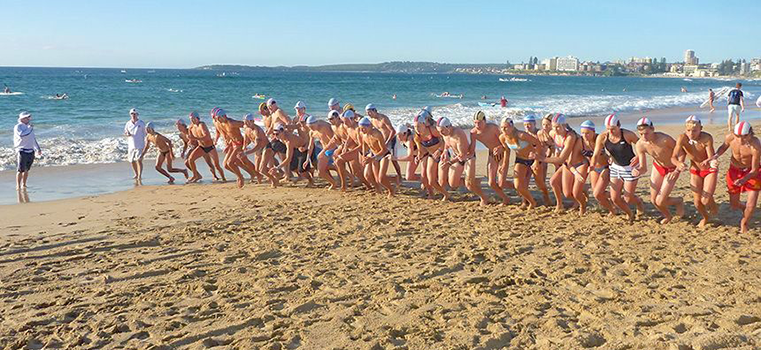Mark Reed, DPM
DABFAS FAPWCA

714-528-3668
Neuroma
A neuroma is the swelling of nerve that is a result of a compression or trauma. They are often described as nerve tumors. However, they are not in the purest sense a tumor. They are a swelling within the nerve that may result in permanent nerve damage. The most common site for a neuroma is on the ball of the foot. The most common cause of neuroma in ball of the foot is the abnormal movement of the long bones behind the toes called metatarsal bones. A small nerve passes between the spaces of the metatarsals. At the base of the toes, the nerves split forming a "Y" and enter the toes. It is in this area the nerve gets pinched and swells, forming the neuroma. Burning pain, tingling, and numbness in one or two of the toes is a common symptom. Sometimes this pain can become so severe, it can bring tears to a patient's eyes. Removing the shoe and rubbing the ball of the foot helps to ease the pain. As the nerve swells, it can be felt as a popping sensation when walking. Pain is intermittent and is aggravated by anything that results in further pinching of the nerve. When the neuroma is present in the space between the third and fourth toes, it is called a Morton's Neuroma. This is the most common area for a neuroma to form. Another common area is between the second and third toes. Neuromas can occur in one or both of these areas and in one or both feet at the same time. Neuromas are very rare in the spaces between the big toe and second toe, and between the fourth and fifth toes. Neuromas have been identified in the heel area, resulting in heel pain.
A puncture wound or laceration that injures a nerve can cause a neuroma. These are called traumatic Neuromas. Neuromas can also result following a surgery that may result in the cutting of a nerve.
Diagnosis
The diagnosis of Neuromas is made by a physical exam and a thorough history of the patient's complaint. Conditions that mimic the pain associated with Neuromas are stress fracture of the metatarsals, inflammation of the tendons in the bottom of the toes, arthritis of the joint between the metatarsal bone and the toe, or nerve compression or nerve damage further up in the foot, ankle, knee, hip, or back. X-rays are generally taken to rule out a possible stress fracture or arthritis. Because nerve tissue is not seen on an x-ray, the x-ray will not show the neuroma. A skilled foot specialist will be able to actually feel the neuroma on his exam of the foot. Special studies such as MRI, CT scan, and nerve conduction studies have little value in the diagnosis of a neuroma. Additionally, these studies can be very expensive and generally the results do not alter the doctor's treatment plan. If the doctor on his exam cannot feel the neuroma, and if the patient's symptoms are not what is commonly seen, then nerve compression at another level should be suspected. In this instance, one area to be examined is the ankle.
Just below the ankle bone on the inside of the ankle, a large nerve passes into the foot. At this level, the nerve can become inflamed. This condition is called Tarsal Tunnel Syndrome. Generally, there is not pain at this site of the inflamed nerve at the inside of the ankle. Pain may instead be experienced in the bottom of the foot or in the toes. This can be a difficult diagnosis to make in certain circumstances. Neuromas, however, occur more commonly than Tarsal Tunnel Syndrome.

Neuroma Treatment
Treatment for the neuroma consists of range of motion exercises to increase the blood supply to the damaged nerve and release adhesions preventing the neve from gliding, cortisone injections, orthotics, chemical treatment to regenerate a new nerve or surgery. Cortisone injections are generally used as an initial form of treatment if there is significant swelling and pain. Cortisone is useful when injected around the nerve, because it can shrink the swelling of the nerve and associated edema. This relieves the pressure on the nerve. Cortisone may provide relief for many months but is often not a cure for the condition and the painful neuroma returns. Dr. Reed first uses range of motion exercises and stretching to reduce the pain in the forefoot if there is not significant edema.
To address the abnormal movement of the metatarsal bones, a functional foot orthotic can be used. These devices are custom-made inserts for the shoes that correct abnormal function of the foot. The combination treatment of cortisone injections and orthotics can be a very successful form of treatment. If, however, there is significant damage to the nerve, then failure to this treatment can occur. When there is permanent nerve damage, the patient is left with three choices: live with the pain, chemical destruction of the nerve, or surgical removal or decompression of the nerve.
NEUROMA SURGERY
The surgical removal of forefoot neuromas can be performed using a local anesthesia with intravenous anesthesia (twilight anesthesia) in an outpatient surgery center or hospital.
Following administration of anesthesia, a skin incision is made on the top of the foot in the location of the neuroma. This is most commonly in the area between the second and third toes or between the third and fourth toes. An alternative surgical approach is to place the skin incision on the bottom of the foot in the location of the neuroma. Most surgeons prefer to make the skin incision on the top of the foot for several reasons. If the skin incision is placed on the bottom of the foot the patient may be required to use crutches for up to three weeks. Additionally, it takes longer for the skin on the bottom of the foot to heal. In the event that a thicken or irregular scar forms during healing, it may cause pain while walking. When the incision is made on the top of the foot the neuroma is easily found between the long bones (metatarsals) behind the toes. After the nerve is identified it is cut and removed. Once the surgery is completed a gauze dressing is applied. This bandage stays in place until the surgeon sees the patient on their first post-operative visit. On the first post-operative visit the surgical site is inspected and a new dressing is applied. The sutures are removed in 10 to 14 days following the surgery. During this period of time the foot must remain dry to reduce the risk of infection. The patient should limit their activities and keep their foot elevated above the heart as much as possible. A post-operative shoe is worn which allows the patient to do limited walking. The patient should not walk without the post-operative shoe. Once the sutures have been removed the patient may bath the foot and attempt to wear a roomy stiff-soled walking shoe. It generally takes three weeks from the time of surgery before the walking shoe can be worn comfortably.
Recovery Time
The time required to be off from work will depend upon the type of work being performed and the type of shoe that must be worn. If the patient can work with their foot propped up and elevated with limited walking, they may be able to return to work within a week of surgery. It is generally recommended that the patient not return to work until they can wear a normal shoe comfortable. Patients who have jobs that require prolonged standing, walking, kneeling or climbing may be off from work for as long as four to six weeks.
DISCLAIMER: MATERIAL ON THIS SITE IS BEING PROVIDED FOR EDUCATIONAL AND INFORMATION PURPOSES AND IS NOT MEANT TO REPLACE THE DIAGNOSIS OR CARE PROVIDED BY YOUR OWN MEDICAL PROFESSIONAL. This information should not be used for diagnosing or treating a health problem or disease or prescribing any medication. Visit a health care professional to proceed with any treatment for a health problem.















